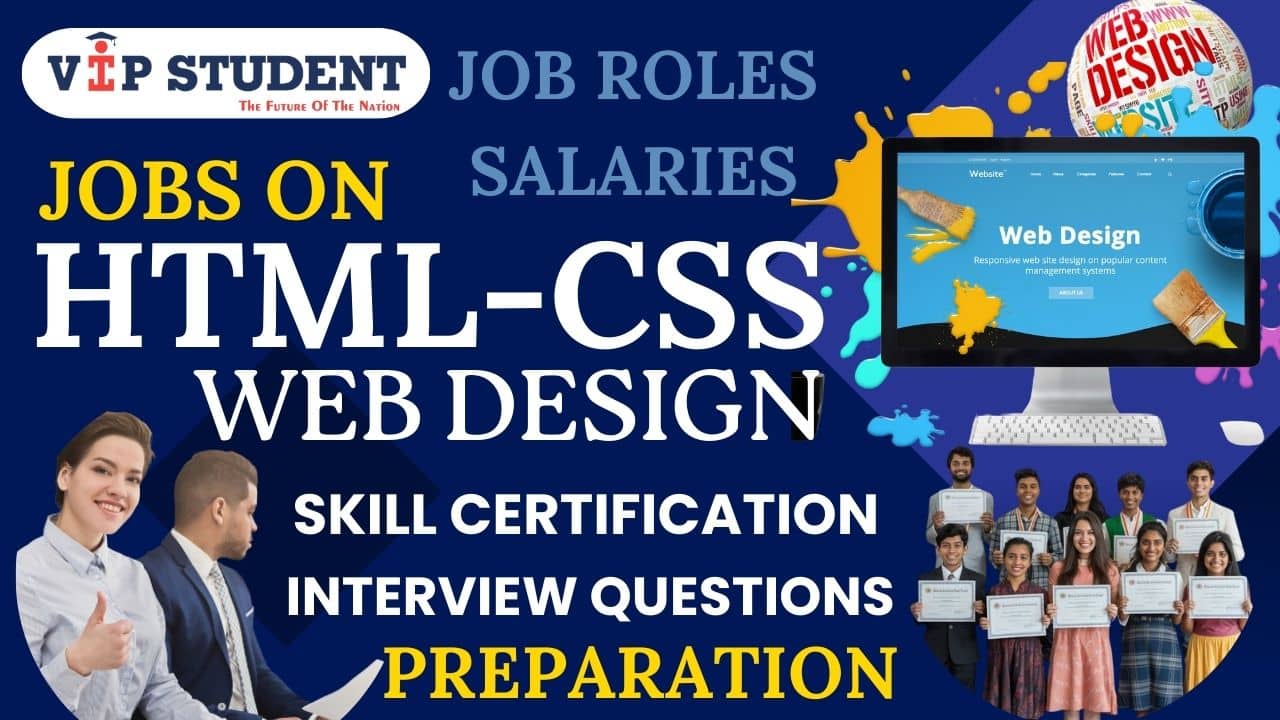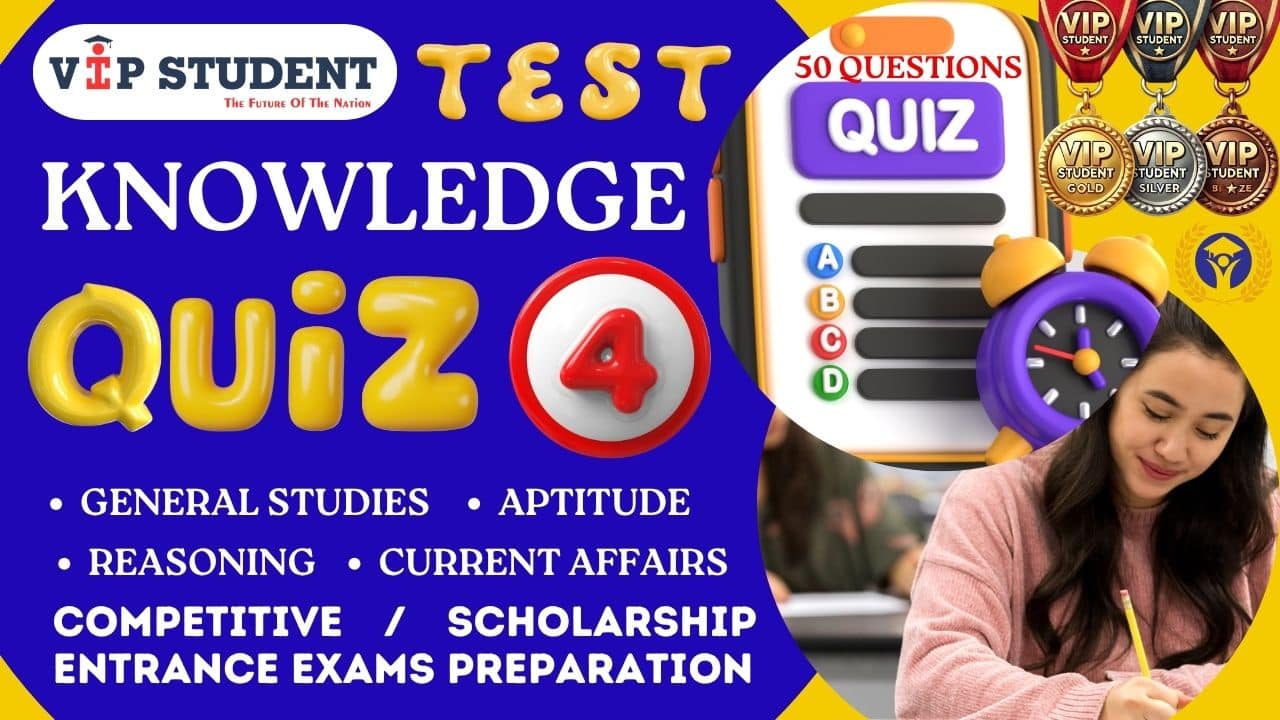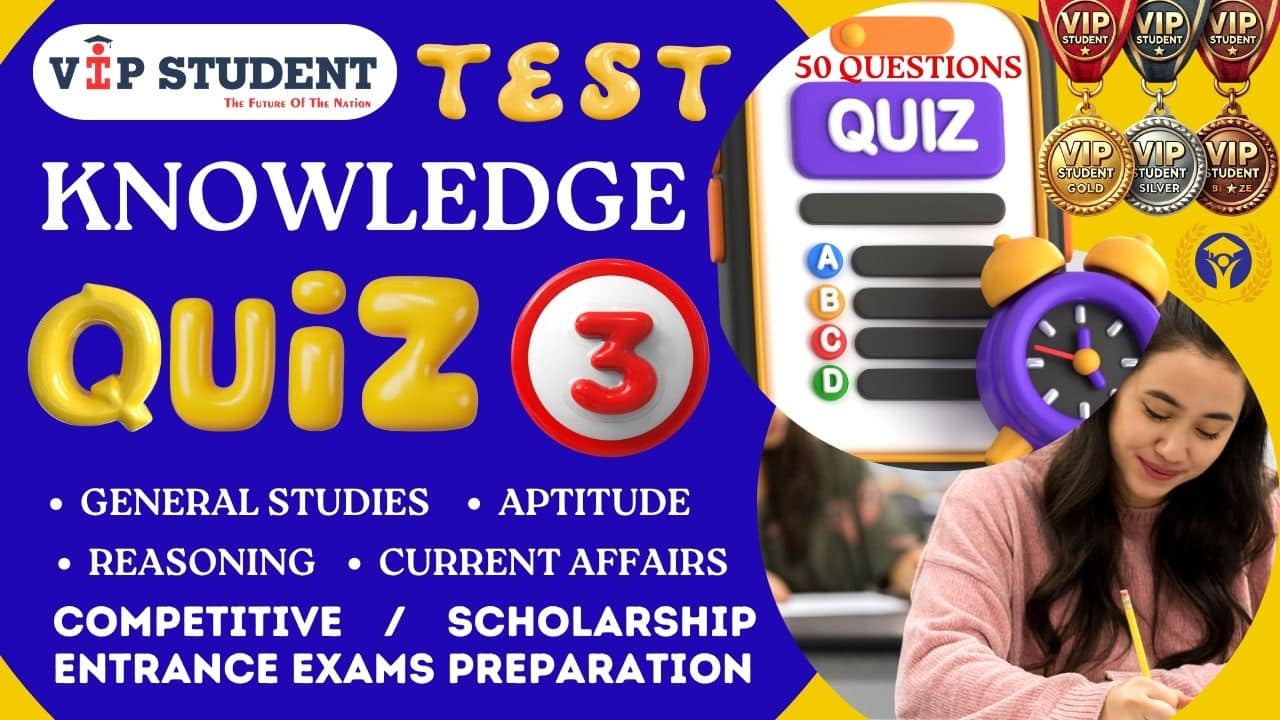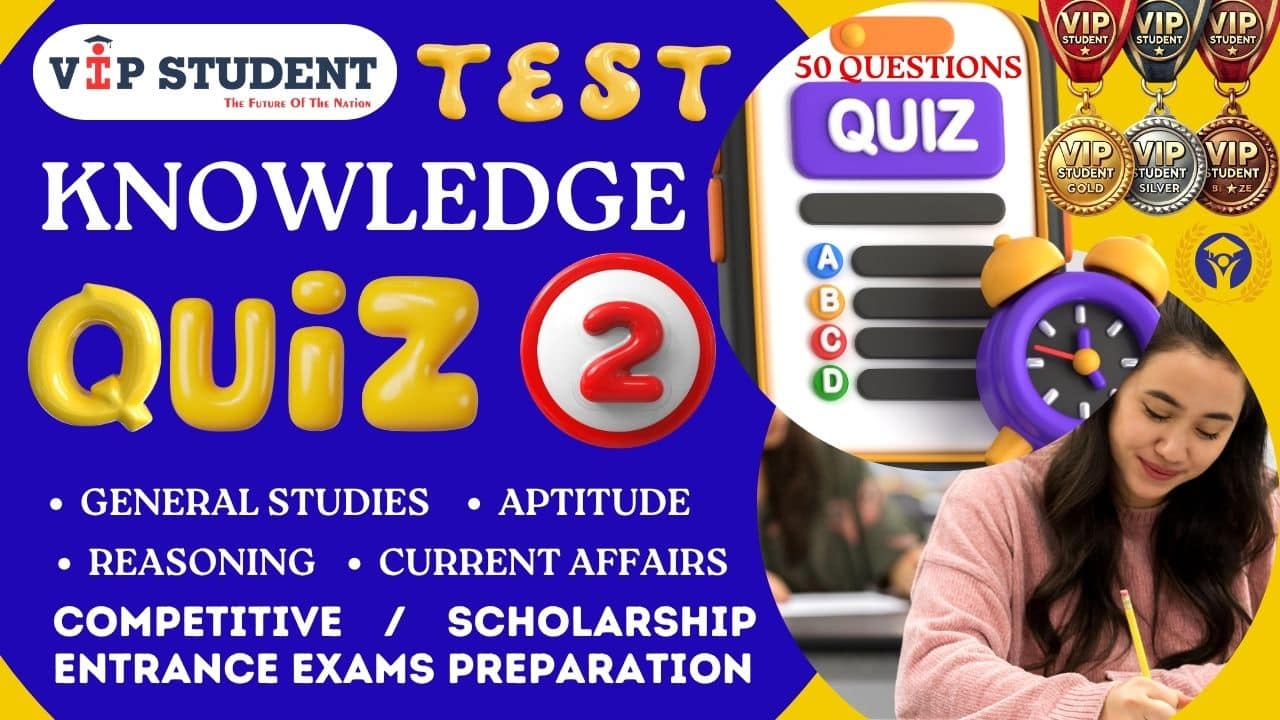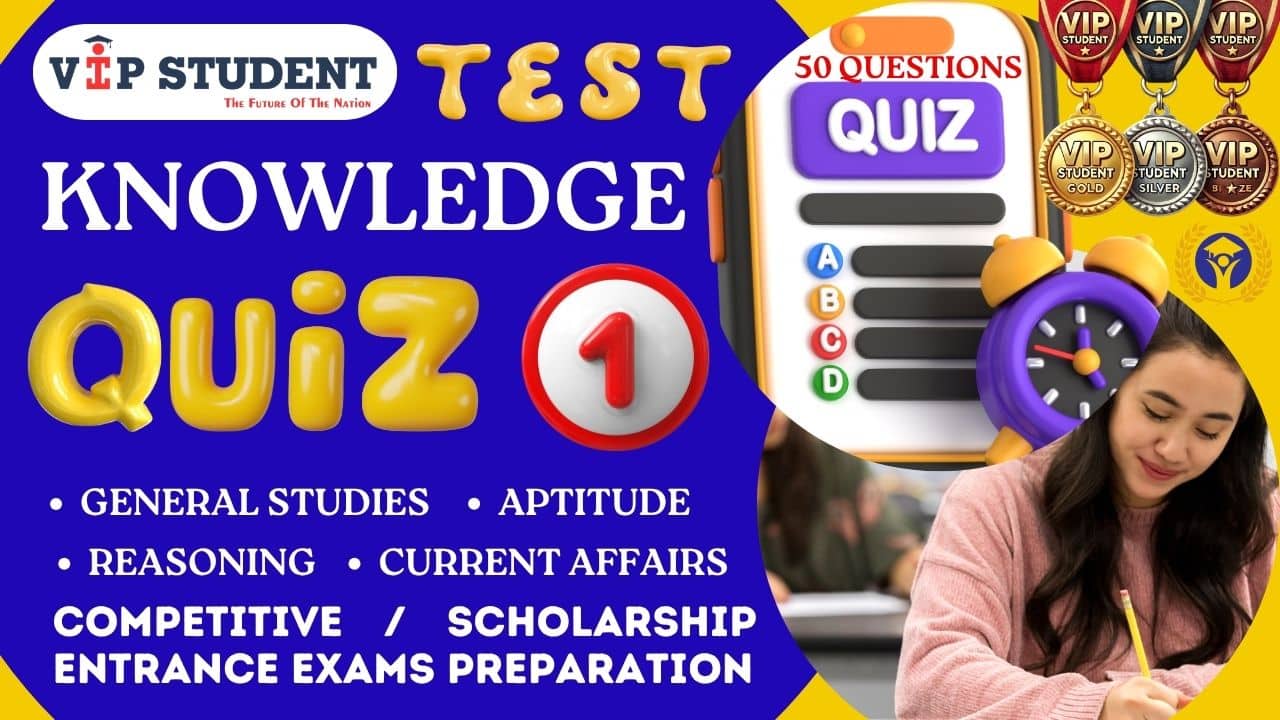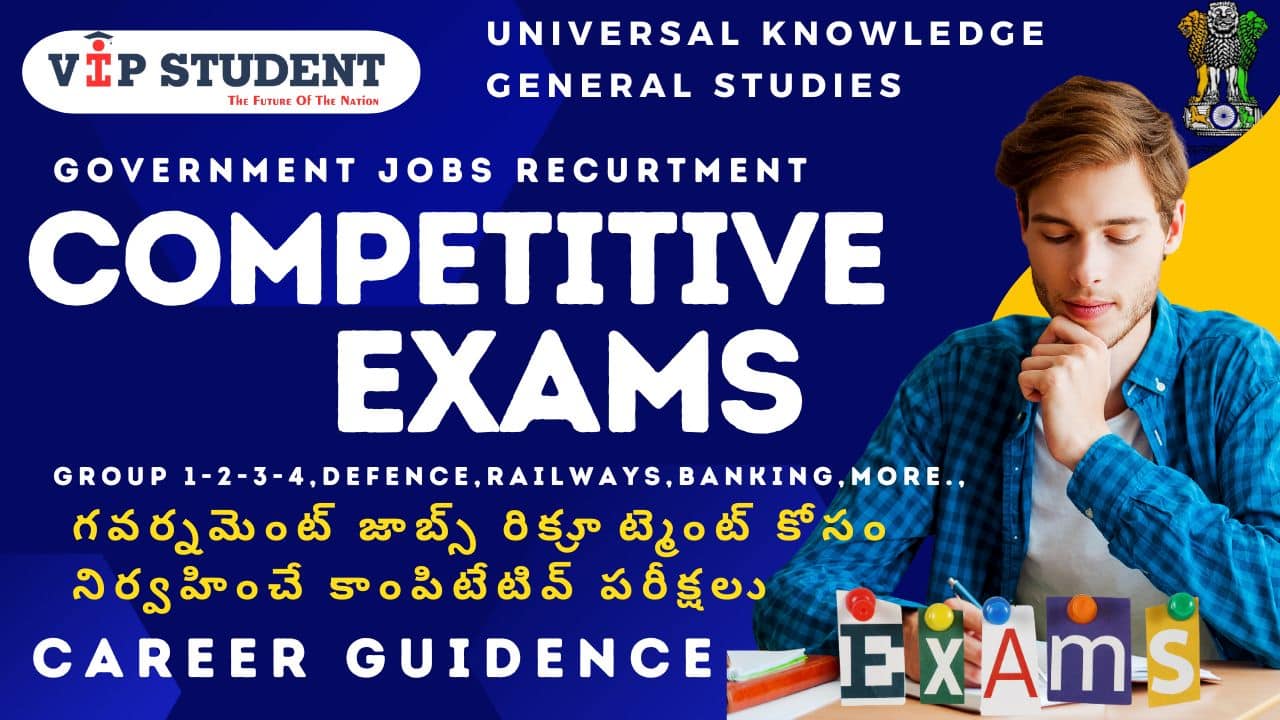LET’S KNOW ABOUT HTML & CSS WEB DESIGNING JOB ROLES, REQUIRED SKILLS, SALARY PARTICULARS, PRACTICE JOB INTERVIEW QUESTIONS AND GET CERTIFIED ON HTML & CSS WEB DESIGNING SKILLS
HTML & CSS WEB DESIGNING JOBS: With the digital world expanding rapidly, web design has become an essential part of every business and brand. Web designers—especially those skilled in HTML and CSS play a critical role in creating attractive, user-friendly websites. Whether you’re a beginner or aspiring professional, web designing offers numerous career opportunities. Whether you’re a job seeker or a student planning your career let’s know about HTML-CSS WEB DESIGNING job roles, required skills, practice on job interview questions and get certified on your HTML-CSS WEB DESIGNING skills.
HTML & CSS Web Designing:
HTML (HyperText Markup Language) and CSS (Cascading Style Sheets) are the backbone of front-end web design. While HTML structures content like text, images, and links, CSS controls layout, colors, fonts, and responsiveness. Together, they form the foundation of all visually appealing and functional websites. Web designing is a rewarding field for creative minds who love technology. Here’s why it’s a great career option:
- High demand across startups, IT companies, and e-commerce
- Freelance and remote work opportunities
- Creative, dynamic, and flexible job roles
- Continuous learning and upskilling potential
- Entry-friendly for freshers and non-tech backgrounds
Jobs on HTML & CSS Web Designing Skills and Career Opportunities💼
🔹 Web Designer
Focuses on designing layouts and coding web pages using HTML, CSS, and basic JavaScript.
🔹 Front-End Developer
Builds the client-side of web applications using HTML, CSS, and JavaScript libraries like React or Vue.
🔹 UI Designer
Creates the user interface layout, visuals, and color schemes to enhance user experience.
🔹 Email Template Designer
Designs responsive HTML email templates used in marketing campaigns.
🔹 WordPress Web Designer
Designs and customizes WordPress themes using HTML, CSS, and page builders.
🔹 Freelance Web Designer
Works independently on client projects, creating websites using HTML/CSS and CMS platforms.
🧠 Essential Skills for HTML & CSS Web Design Jobs
✔️ Core Technical Skills
- HTML5 & CSS3 – Understanding tags, elements, selectors, media queries, etc.
- Responsive Design – Making websites mobile-friendly using CSS Flexbox/Grid and media queries
- Basic JavaScript – For interactivity like menus, sliders, forms
- Bootstrap or Tailwind CSS – CSS frameworks for faster design
- Version Control (Git/GitHub) – Managing code and collaboration
- WordPress Basics – Using themes, page builders, and editing styles
✔️ Design & Soft Skills
- UI/UX Principles – Designing user-friendly and aesthetic layouts
- Attention to Detail – Pixel-perfect design implementation
- Creativity – Visualizing attractive web layouts
- Problem-Solving – Debugging design and layout issues
- Time Management – Managing deadlines in projects or freelance gigs
🎓 Educational Qualifications & Certifications
Degrees:
- Diploma or B.Sc. in Web Design / Multimedia
- BCA or B.Tech (Computer Science or IT)
- Self-taught designers with strong portfolios also get hired
Recommended Certifications:
- Coursera: HTML, CSS, and Web Design
- Google UX Design Certificate
- FreeCodeCamp: Responsive Web Design
- Udemy: Complete Front-End Web Development
🚀 How to Start Your Career in Web Designing
- Learn HTML and CSS thoroughly – Use platforms like W3Schools, Codecademy, or YouTube.
- Build a Portfolio – Create sample projects like landing pages, blogs, or business websites.
- Master Responsive Design – Practice using media queries and tools like Bootstrap.
- Explore Freelance Projects – Use platforms like Fiverr or Upwork to gain hands-on experience.
- Apply for Internships – Gain practical experience at small agencies or startups.
- Stay Updated – Follow trends, tools, and CSS frameworks.
🔍 Job Portals to Find Web Designing Jobs in India
- LinkedIn Jobs
- Naukri.com
- Indeed India
- Internshala (for freshers/interns)
- Fiverr / Upwork (for freelance projects)
- Toptal / Freelancer.com (for advanced freelancers)
💰 Salary Expectations for HTML & CSS Web Designers in India
| 👨💻 Job Role | 🧑💻 Experience Level | 💸 Monthly Salary | 💰 Annual Salary (INR) | 🔼 Career Path |
|---|---|---|---|---|
| 1. Web Design Intern | 0–6 months (Fresher) | ₹8,000 – ₹15,000 | ₹96,000 – ₹1.8 LPA | Intern → Junior Web Designer |
| 6–12 months (Trainee) | ₹12,000 – ₹18,000 | ₹1.4 LPA – ₹2.1 LPA | ||
| 2. Junior Web Designer | 1–2 years | ₹15,000 – ₹30,000 | ₹1.8 LPA – ₹3.6 LPA | Junior → Mid-Level Designer |
| 2–3 years | ₹25,000 – ₹35,000 | ₹3 – ₹4.2 LPA | ||
| 3. Front-End Developer (HTML/CSS) | 1–3 years | ₹30,000 – ₹50,000 | ₹3.6 LPA – ₹6 LPA | Front-End Dev → UI Dev → Front-End Lead |
| 4–6 years | ₹50,000 – ₹80,000 | ₹6 – ₹10 LPA | ||
| 7+ years | ₹80,000 – ₹1.2 lakh+ | ₹10 – ₹15+ LPA | ||
| 4. WordPress Web Designer | 1–2 years | ₹25,000 – ₹40,000 | ₹3 – ₹4.8 LPA | WordPress Designer → Theme Dev → Full-Stack Dev |
| 3–5 years | ₹40,000 – ₹60,000 | ₹4.8 – ₹7.2 LPA | ||
| 5. UI/UX Designer with HTML/CSS | 2–4 years | ₹35,000 – ₹60,000 | ₹4.2 – ₹7.2 LPA | UI Designer → UX Strategist → Product Designer |
| 5–8 years | ₹60,000 – ₹1 lakh+ | ₹7.2 – ₹12+ LPA | ||
| 6. Freelancer (HTML/CSS Projects) | 0–2 years (Beginner) | ₹10,000 – ₹40,000 (varies) | ₹1.2 – ₹5 LPA (project-based) | Can grow to Consultant/Agency Owner |
| 3–6 years (Experienced) | ₹40,000 – ₹1,00,000+ | ₹5 – ₹12+ LPA | ||
| 7+ years (Top-tier Freelancer) | ₹1,00,000 – ₹3,00,000+ | ₹12 – ₹36+ LPA |
-
LPA = Lakhs Per Annum
🏢 Top Industries Hiring Web Designers
- IT and Software Development Companies
- Digital Marketing Agencies
- E-commerce Platforms
- Media & News Websites
- Educational Institutions (EdTech)
- Healthcare, Legal, or Real Estate Portals
- Startups & Entrepreneurs
📈 Growth Path for Web Designers in India
- Web Design Intern → Junior Designer → Web Designer
- Front-End Developer → UI Developer → UI/UX Designer
- Freelancer → Full-time Consultant → Design Agency Owner
🔍 HTML Job Interview Questions and Answers
- What does HTML stand for and what is its primary function?
HTML stands for HyperText Markup Language. It is used to structure content on the web, such as text, images, links, and multimedia. - Can you explain the structure of a basic HTML document?
A basic HTML document includes:<!DOCTYPE html> <html> <head> <title>Page Title</title> </head> <body> <h1>Hello World</h1> </body> </html> - What is the difference between HTML and HTML5?
HTML5 is the latest version that introduces semantic tags, multimedia support, and new APIs like geolocation and canvas. - What is the purpose of the
<!DOCTYPE html>declaration?
It tells the browser to render the page using HTML5 standards. - What are HTML tags and elements? Give examples.
Tags define elements. Example:- Tag:
<p> - Element:
<p>This is text</p>
- Tag:
- What is the difference between block-level and inline elements?
- Block-level: starts on a new line (
<div>,<p>) - Inline: stays in the same line (
<span>,<a>)
- Block-level: starts on a new line (
- How do you create hyperlinks in HTML?
Using the<a>tag:<a href="https://example.com">Visit Site</a> - What is the use of the
<meta>tag in HTML?
Provides metadata like character encoding, page description, and author. - What are semantic HTML tags? Provide examples.
Tags that convey meaning, such as:
<article>,<header>,<footer>,<nav> - How do you embed an image in an HTML page?
Using the<img>tag:<img src="image.jpg" alt="Description"> - What are empty or void elements in HTML?
Elements that don’t have closing tags:
<img>,<br>,<hr> - What is the purpose of the
<head>and<body>sections in HTML?<head>: includes metadata, title, links<body>: contains visible page content
- How do you create a list in HTML (ordered and unordered)?
- Ordered:
<ol> - Unordered:
<ul> - List items:
<li>
- Ordered:
- How do you create a table in HTML?
Use:<table> <tr><th>Header</th></tr> <tr><td>Data</td></tr> </table> - How do you create a form in HTML?
Use<form>with input elements:<form> <input type="text"> <textarea></textarea> <button>Submit</button> </form> - What is the purpose of the
actionandmethodattributes in the<form>tag?action: URL where data is sentmethod: HTTP method used (GETorPOST)
- What is the difference between
idandclassattributes in HTML?id: unique per elementclass: can be used on multiple elements
- How do you link an external CSS file to an HTML document?
In the<head>:<link rel="stylesheet" href="style.css"> - What is the difference between
<div>and<span>elements?<div>: block-level<span>: inline
- How do you create a comment in HTML?
<!-- This is a comment --> - What are HTML entities? Give examples.
Used to display reserved characters:
<for<,&for& - How do you create a hyperlink that opens in a new tab?
<a href="url" target="_blank">Link</a> - What is the purpose of the
altattribute in the<img>tag?
Provides alternative text if the image fails to load or for accessibility. - What is the difference between absolute and relative URLs?
- Absolute: full path (e.g.,
https://example.com/image.jpg) - Relative: based on current file location (e.g.,
images/pic.jpg)
- Absolute: full path (e.g.,
- How do you include audio or video in an HTML page?
Use:<audio controls src="sound.mp3"></audio> <video controls src="video.mp4"></video> - What is the use of the
<iframe>tag?
Embeds another webpage into the current page. - How can you group form elements in HTML?
Use<fieldset>and<legend>:<fieldset> <legend>Details</legend> ... </fieldset> - What is the purpose of the
<label>tag in forms?
Associates a label with an input for better accessibility. - What is the use of
required,readonly, anddisabledattributes?required: input must be filledreadonly: input can’t be editeddisabled: input is unselectable
- How do you create radio buttons and checkboxes in HTML?
<input type="radio" name="gender"> <input type="checkbox" name="subscribe"> - What are data attributes in HTML5?
Custom attributes for extra data:<div data-role="admin"></div> - How does the
<section>tag differ from<article>?<section>: groups related content<article>: independent content (e.g., blog post)
- What is the difference between
<strong>and<b>?<strong>: semantic emphasis<b>: only bold styling
- How do you implement responsive design using HTML and CSS?
- Use:
<meta name="viewport" content="width=device-width, initial-scale=1.0"> - CSS media queries and flexible grids
- Use:
- How do you define character encoding in an HTML document?
<meta charset="UTF-8"> - What is the purpose of the
<nav>tag in HTML5?
Defines a navigation section of the page. - What are some new input types introduced in HTML5?
email,date,tel,range,color,url - How do you optimize HTML code for SEO?
Use semantic tags, heading hierarchy, alt tags for images, meta descriptions. - What is the difference between synchronous and asynchronous script loading?
- Synchronous: blocks HTML parsing
- Asynchronous: loads and executes independently
- How do you include JavaScript in an HTML file?
- Inline:
<script>console.log('Hi')</script> - External:
<script src="script.js"></script>
- Inline:
- What is the role of
deferandasyncattributes in the<script>tag?defer: runs after HTML parsingasync: runs as soon as it loads
- Can you explain the difference between
<em>and<i>?<em>: semantic emphasis<i>: italic styling only
- What is accessibility in HTML?
Making web content usable for people with disabilities, using semantic tags, alt text, and ARIA attributes. - How do you handle HTML validation?
Use the W3C HTML Validator to check for syntax errors. - What is the use of the
<template>tag in HTML?
Holds HTML that is not rendered until used with JavaScript. - What are inline frames and when should you avoid using them?
<iframe>embeds content but may cause performance and security issues. - How can you add a favicon to a webpage using HTML?
<link rel="icon" href="favicon.ico" type="image/x-icon"> - What is the importance of using semantic tags?
They improve SEO, accessibility, and code clarity. - How do you test and debug HTML code efficiently?
Use browser developer tools, inspect element, and validators. - What tools or editors do you use to write and validate HTML?
- Editors: VS Code, Sublime Text, Atom
- Validators: W3C Validator, HTMLHint
GET CERTIFIED ON YOUR HTML WEB DESIGNING SKILLS AND KNOWLEDGE
🎨 CSS Job Interview Questions and Answers
- What does CSS stand for?
CSS stands for Cascading Style Sheets. It is used to style and layout web pages. - What are the different types of CSS?
Inline, Internal (or Embedded), and External CSS. - How do you link an external CSS file to an HTML document?
Using<link rel="stylesheet" href="style.css">inside the<head>section. - What is the difference between class and id selectors in CSS?
idis unique (#id), whileclasscan be reused (.class). - What is the Box Model in CSS?
It includes content, padding, border, and margin. - What is the difference between
relative,absolute,fixed, andstickypositioning?relative: positions relative to normal positionabsolute: relative to the nearest positioned ancestorfixed: relative to the viewportsticky: toggles between relative and fixed
- How do you apply styles to multiple elements?
Use a comma-separated selector list:h1, h2, p { color: red; } - What are pseudo-classes in CSS?
They define a special state::hover,:first-child,:nth-child(). - What is the difference between
em,rem, andpxunits in CSS?px: absolute sizeem: relative to parent font sizerem: relative to root font size
- What is specificity in CSS?
It determines which rule applies when multiple rules match an element. - What is the difference between visibility: hidden and display: none?
hidden: element is invisible but takes up space;none: element is removed from the layout. - What are media queries in CSS?
They apply styles based on device characteristics like width:@media (max-width: 600px) { body { font-size: 14px; } } - What is a pseudo-element?
It allows styling part of an element, e.g.,::before,::after. - How do you center a div horizontally and vertically?
Use Flexbox:display: flex; justify-content: center; align-items: center; - What is the z-index in CSS?
It controls the stacking order of overlapping elements. - What is the difference between inline and block elements in CSS?
Inline: flows with text; Block: takes full width and starts on a new line. - How do you apply styles only to a specific element inside another?
Use descendant selectors:.parent .child { color: blue; } - What are combinators in CSS?
They define relationships: descendant (>), adjacent (+), general sibling (~). - What is a universal selector in CSS?
It targets all elements:* { margin: 0; padding: 0; } - What is the difference between
min-widthandmax-width?min-width: sets minimum widthmax-width: sets maximum width
- What is inheritance in CSS?
Some properties pass from parent to child (e.g.,color,font). - How do you make a responsive layout in CSS?
Use media queries, percentage widths, and flexible grids like Flexbox or CSS Grid. - What is Flexbox in CSS?
A layout model for 1D layouts:display: flex; justify-content: space-between; align-items: center; - What is Grid in CSS?
A 2D layout system to manage rows and columns:display: grid; grid-template-columns: 1fr 1fr; - What are keyframe animations in CSS?
They define animation behavior:@keyframes slide { from {left: 0;} to {left: 100px;} } - What are transitions in CSS?
Used to animate property changes smoothly:transition: all 0.3s ease; - How do you hide an element but keep it accessible to screen readers?
Use:position: absolute; left: -9999px; - What are vendor prefixes in CSS?
They ensure cross-browser compatibility:-webkit-,-moz-,-ms-. - How do you apply styles to the first and last child of an element?
Using pseudo-classes::first-child,:last-child. - What is the difference between
opacityandvisibility?
opacity: 0makes it transparent;visibility: hiddenhides but keeps space. - How do you change the default list style in CSS?
list-style-type: none; - How do you make an element responsive to screen size?
Use percentage widths,max-width, and media queries. - What is the difference between relative and absolute positioning in CSS?
relative: offset from itself;absolute: offset from the nearest positioned ancestor. - What is
calc()in CSS?
It lets you do calculations in property values:width: calc(100% - 50px); - How do you apply custom fonts in CSS?
@font-face { font-family: 'MyFont'; src: url('myfont.woff'); } - What are the differences between
inline,inline-block, andblockdisplay values?inline: no width/heightinline-block: behaves like inline but allows width/heightblock: takes full line
- What does
important!do in CSS?
Overrides all other declarations of a style, even inline. - How do you make an image responsive?
img { max-width: 100%; height: auto; } - What is the default position of an HTML element?
static— elements are positioned normally in the flow. - What is the difference between
autoand0in CSS margins?
autocenters elements;0sets margin to zero. - What is the use of
overflowin CSS?
Controls what happens when content overflows its container:visible,hidden,scroll,auto.
- How can you create a hover effect using CSS?
a:hover { color: red; } - What is the difference between
vh,vw, and%units?vh: 1% of viewport heightvw: 1% of viewport width%: relative to parent
- What is the use of the
position: sticky;property?
The element sticks to a position while scrolling. - How do you make a website mobile-friendly with CSS?
Use responsive design techniques like media queries, flexible grids, and scalable units. - What are shadows in CSS and how do you apply them?
box-shadowfor elements andtext-shadowfor text. - What is the purpose of
line-heightin CSS?
Controls the vertical spacing of lines of text. - How do you style form elements in CSS?
Target input types:input[type="text"] { border: 1px solid gray; } - What’s the difference between
max-widthandwidth?
max-widthallows flexibility;widthsets a fixed size. - How do you prevent a div from shrinking in Flexbox?
Use:flex-shrink: 0;
GET CERTIFIED ON YOUR CSS WEB DESIGNING SKILLS AND KNOWLEDGE
GENERAL JOB INTERVIEW QUESTIONS AND SAMPLE ANSWERS
1. Tell me about yourself.
General Answer:
you have to tell about your self minimum 3 to 5 minits – Tell about your personal details like your name , parents and siblings and what they do , your location and its famous for, your acadamics like your school name, college name and mention marks you are obtained in 10th class, intermediate, graduation, post graduation (as per your education) and your school or college known for, your certification cources, your projects, your achivements , your tallents, your hobbies and skills you are good at like communication, problem-solving, and teamwork.
And conclude with “I’m looking forward to contributing my skills and strengths to a great/new organization while continuing to learn new skills and to develope my strengths.”
2. What are your strengths?
General Answer:
“My strengths include being organized, reliable, and a quick learner. I’m also good at working with others and staying calm under pressure.”
3. What is your greatest weakness?
General Answer:
“Sometimes I focus too much on details because I want everything to be perfect. However, I’ve been working on managing my time better and knowing when to move on to the next task.”
4. Why do you want to work here?
General Answer:
“I’ve heard positive things about the company’s culture and growth opportunities. I’m excited about the chance to work in an environment that values learning and teamwork.”
5. Why should we hire you?
General Answer:
“I believe I can bring value through my work ethic, adaptability, and eagerness to learn. I’m confident I can quickly become a productive member of your team.”
6. Where do you see yourself in 5 years?
General Answer:
“In five years, I hope to be in a position where I’ve gained more experience, taken on new challenges, and grown professionally within the company.”
7. Describe a challenge you’ve faced and how you handled it.
General Answer:
“I faced a situation where deadlines were tight and priorities were shifting. I stayed focused, managed my time well, and communicated clearly with my team, which helped us complete the project successfully.”
8. How do you handle stress and pressure?
General Answer:
“I try to stay calm and focused by organizing my tasks and taking short breaks when needed. I also talk to teammates or supervisors if I need support.”
9. Do you prefer to work independently or in a team?
General Answer:
“I’m comfortable with both. I enjoy collaborating and learning from others, but I can also stay focused and productive when working on my own.”
10. Do you have any questions for us?
General Answer:
“Yes, I’d like to know more about the daily responsibilities of the role and what the team culture is like.”
HTML & CSS WEB DESIGNING Conclusion:
HTML and CSS are your gateway into the exciting world of web design. With minimal investment and a creative mindset, you can start a fulfilling career in web design—either as a freelancer or a full-time employee. As businesses in India go digital, the need for skilled web designers continues to rise. So, master the basics, build a strong portfolio, and grab your place in this ever-evolving digital world.
we hope these HTML AND CSS WEB DESIGNING jobs interview questions are helpfull to you.Preparing for a job interview can feel overwhelming, but having thoughtful answers to common questions can make a big difference. The key is to stay confident, be honest, and tailor your responses to reflect your real experiences and goals. Use the questions and sample answers above as a guide, but remember to make them your own.
